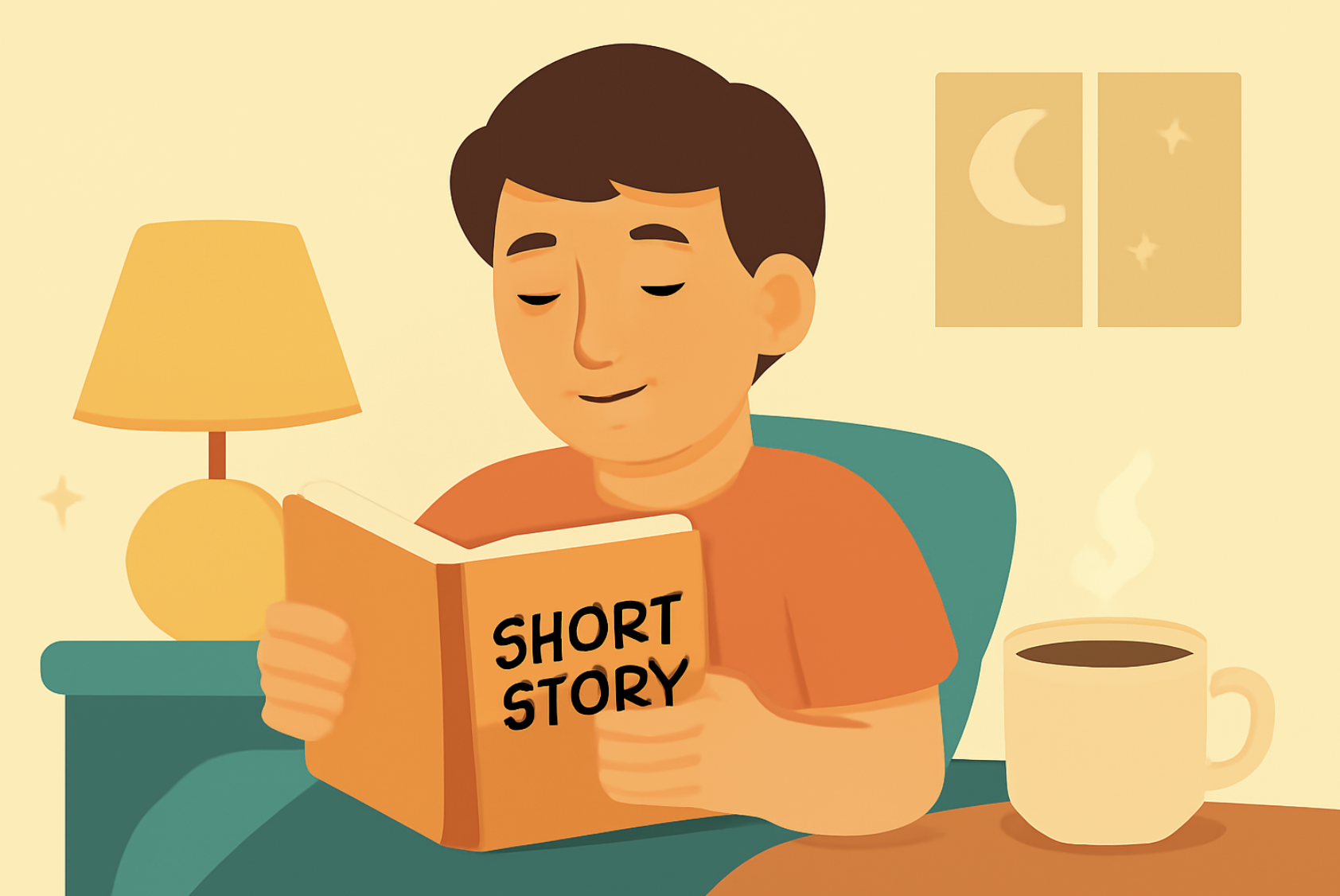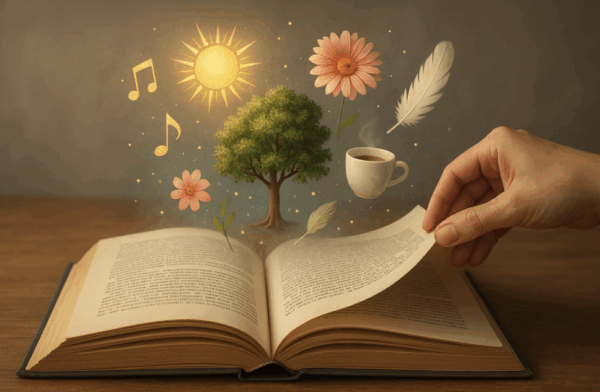Every great short story has that special spark that makes it memorable, but what exactly is it that makes these stories so compelling? The answer lies in the carefully crafted elements that work together to create a well-rounded narrative. Whether you’re a writer or a reader, understanding the essential short story elements can give you a deeper appreciation for the craft and help you create or analyze stories that leave a lasting impact.
In this guide, we’ll explore the key components of a short story, including the 7 vital elements that make up a compelling narrative. From the characters and plot to the mood and theme, these elements combine to engage readers, evoke emotions, and leave them thinking long after the story ends. So, let’s dive in and discover what makes a short story truly unforgettable!
What Are Short Story Elements?
Short story elements are the essential building blocks that form the foundation of a well-crafted narrative. These elements are the ingredients that work together to create an engaging and impactful story. From the characters we root for to the settings that immerse us in the story’s world, every element plays a crucial role in the overall experience of the reader.
These elements are not just technical tools—they shape how a story unfolds, how readers connect with it, and how they interpret the themes within it. Understanding these components helps both writers and readers navigate the complexities of storytelling, ensuring that every detail serves a purpose.
When we talk about short story elements, we refer to the key components that must be considered for any story to resonate: character, setting, plot, conflict, theme, point of view, and tone/mood. Each of these elements contributes to the story in its own way, creating a seamless narrative that captivates the audience from start to finish.
In the following sections, we’ll break down each of these elements, explaining their significance and how they work together to craft an unforgettable short story. Whether you’re a writer or an avid reader, understanding these elements will give you a deeper appreciation for the art of storytelling.
Your Publishing Journey Awaits – Start NowThe 7 Key Elements of a Short Story
Now that we know what short story elements are, let’s break down the 7 key components that make a short story compelling. Each element plays a specific role in building the narrative and engaging the reader. When these elements are balanced and well-developed, they combine to create a memorable and impactful story.
1. Character
Characters are the heart of any short story. They drive the plot, engage the reader emotionally, and often embody the themes of the narrative. A compelling character is well-rounded, with clear motivations, strengths, weaknesses, and growth throughout the story.
- Example: In The Lottery by Shirley Jackson, the townspeople’s shocking reactions reveal much about their collective character and the traditions that bind them, keeping the reader hooked on the unfolding drama.
2. Setting
The setting refers to the time and place in which the story occurs. It establishes the context, shapes the mood, and often influences the characters’ actions. A well-crafted setting adds depth to the story and can become almost like a character in its own right.
- Example: The dark, rainy night in The Tell-Tale Heart by Edgar Allan Poe mirrors the narrator’s disturbed mind and heightens the story’s suspenseful atmosphere.
3. Plot
The plot is the sequence of events that make up the story. It typically includes an introduction, rising action, climax, falling action, and resolution. A good plot is structured in a way that creates tension, builds towards a climax, and resolves in a way that feels satisfying.
- Example: In The Necklace by Guy de Maupassant, the plot follows the protagonist’s loss of a borrowed necklace, leading to a dramatic twist at the end, which highlights the theme of vanity and materialism.
4. Conflict
Conflict is the driving force of the plot. It’s the struggle between opposing forces that creates tension and drives the characters to act. Conflict can be internal (man vs. self), external (man vs. man, man vs. nature, etc.), or both. The resolution of the conflict provides the climax and closure of the story.
- Example: In Hills Like White Elephants by Ernest Hemingway, the internal conflict between the couple over whether to have an abortion creates a tense, emotional atmosphere throughout the story.
5. Theme
The theme is the underlying message or central idea of the story. It’s what the story is really about on a deeper level and what the author wants the reader to reflect on after the story is over. Themes often explore universal concepts like love, loss, identity, or justice.
- Example: The Gift of the Magi by O. Henry explores the theme of selflessness and love, demonstrated by the sacrifices the couple makes for each other despite their poverty.
6. Point of View
Point of view refers to the perspective from which the story is told. It influences how much the reader knows about the characters, events, and setting. Common points of view include first-person (I), second-person (you), and third-person (he, she, they).
- Example: In The Catcher in the Rye by J.D. Salinger, the first-person point of view allows readers to see the world through Holden Caulfield’s disillusioned eyes, creating an intimate connection with his character.
7. Tone and Mood
Tone refers to the author’s attitude toward the subject, while mood refers to the emotional atmosphere that the reader experiences. The tone and mood work together to shape the overall emotional impact of the story. They help set expectations and immerse the reader in the world of the narrative.
- Example: The tone in Frankenstein by Mary Shelley is dark and cautionary, while the mood is eerie and tense, which mirrors the tragic nature of the story and the consequences of unchecked ambition.
Each of these elements plays a critical role in shaping a short story. When they come together effectively, they create a narrative that captures the reader’s attention, stirs emotions, and leaves a lasting impact. In the next section, we’ll explore how these elements work together and contribute to the overall effectiveness of a short story.
How These Elements Work Together
Now that we’ve explored each of the 7 key elements of a short story, it’s important to understand how they work together to create a seamless and compelling narrative. Each element plays a distinct role, but they are interdependent—meaning that a strong character development might rely on the setting, the plot may be shaped by the conflict, and the theme could influence the tone. When these elements are well-balanced, they create a cohesive and engaging story that resonates with readers.
1. Characters and Setting
The setting not only serves as the backdrop but also influences the behavior and emotions of the characters. A well-developed character cannot exist in a vacuum; they are shaped by their environment, and the setting helps to establish their motivations, reactions, and limitations. For example, in a dystopian setting, characters are often forced to confront larger societal issues, while in a more intimate setting, their internal struggles might take center stage.
- Example: In The Great Gatsby by F. Scott Fitzgerald, the opulent setting of East Egg and West Egg mirrors the class differences and moral decay that define the characters, particularly Gatsby’s pursuit of Daisy and his longing for a perfect, unreachable future.
2. Plot and Conflict
Conflict is the heartbeat of the plot. The actions, decisions, and struggles within the story stem from the conflict. Whether it’s an external struggle between two characters or an internal battle within one character’s mind, conflict keeps the plot moving forward and ensures that the reader remains invested. The tension created by the conflict builds up through the rising action, reaches its peak during the climax, and finally resolves in the denouement.
- Example: In Of Mice and Men by John Steinbeck, the central conflict—Lennie’s unintentional destruction of things and the pressure this places on his friendship with George—propels the plot forward, leading to a tragic resolution.
3. Theme and Point of View
The theme often ties directly into the point of view, as the narrator’s perspective shapes how the reader interprets the story’s central ideas. A first-person narrator, for example, brings a personal lens to the theme, allowing readers to experience it from a deeply subjective viewpoint. In contrast, a third-person omniscient narrator can provide a broader view of the theme, allowing readers to see multiple perspectives.
- Example: In The Stranger by Albert Camus, the detached, almost indifferent first-person point of view reinforces the novel’s theme of existentialism, where the protagonist’s disconnection from society’s norms and expectations leads to his ultimate fate.
4. Tone and Mood with All Other Elements
The tone and mood of a story are woven throughout the characters, setting, plot, and conflict. A dark and ominous tone could make the setting feel more oppressive, while a lighthearted tone might make the conflict seem less threatening. The mood, shaped by the tone, influences the emotional experience of the reader as they journey through the story.
- Example: In The Metamorphosis by Franz Kafka, the bleak, surreal tone adds to the heavy mood of isolation and alienation that the protagonist, Gregor Samsa, experiences after waking up as a giant insect. The tone complements the plot and conflict, making the story’s emotional impact more profound.
5. Theme and Resolution
The theme often becomes fully realized in the resolution of the story. The way the plot resolves, and the decisions made by the characters, help to reinforce or challenge the story’s central theme. The resolution provides closure for the conflict, but it can also offer new insights into the theme that might not have been clear at the start.
- Example: In A Good Man is Hard to Find by Flannery O’Connor, the resolution, with the grandmother’s encounter with the Misfit, brings the theme of redemption and the loss of innocence into sharp focus, forcing the reader to reflect on the grandmother’s moral transformation.
When all of these elements are thoughtfully integrated, they create a narrative that feels whole and purposeful. A story where the character’s journey, the challenges they face, the setting they inhabit, and the emotions they experience come together to reinforce the central theme, all while drawing the reader in with engaging conflict and plot.
In the next section, we’ll talk about why understanding these elements matters for both writers and readers, and how paying attention to them can elevate your own short stories or deepen your analysis of others.
Why Understanding Short Story Elements Matters
Whether you’re a writer trying to craft a compelling narrative or a reader looking to analyze a story more deeply, understanding short story elements is key to appreciating the full impact of the narrative. These elements aren’t just technicalities—they are the foundational components that make a story resonate with the audience. By mastering these elements, you can enhance your storytelling skills and gain a deeper insight into the stories you read.
For Writers: Crafting a Compelling Story
As a writer, understanding the key elements of a short story allows you to create a well-rounded and engaging narrative. By carefully constructing characters, setting, plot, and conflict, you can ensure that each component serves the overall story. Here’s why mastering these elements matters for writers:
- Structure and Balance: Knowing how to use each element allows you to balance your story’s structure. A well-developed character can drive the plot forward, while a carefully chosen setting can enhance the mood. When all elements are aligned, your story feels cohesive and purposeful.
- Engagement: Readers connect with stories through relatable characters, compelling conflict, and meaningful themes. By understanding how to integrate these elements, writers can engage their audience emotionally, ensuring that the reader is invested in the outcome of the story.
- Emotional Impact: Themes and tone shape how readers feel about the story. By strategically using conflict, character development, and setting, you can heighten the emotional impact of your narrative. A powerful story often leaves the reader with lingering thoughts or emotions, and understanding how these elements interact is key to achieving that.
- Purposeful Storytelling: Every element in a short story should serve the purpose of advancing the plot, revealing character motivations, or reinforcing the theme. By paying attention to each element’s role, writers can avoid unnecessary details and keep the story focused and impactful.
For Readers: Analyzing and Appreciating Stories
For readers, understanding short story elements allows you to appreciate the depth and complexity of the narrative. It helps you analyze why a story works (or doesn’t work) and what makes it memorable. Here’s why understanding these elements matters for readers:
- Deeper Engagement: When you recognize the elements at play in a story, you can engage with the narrative on a deeper level. Understanding how the setting influences the characters or how the conflict shapes the plot allows you to become more involved in the story.
- Appreciating Craftsmanship: Writers use these elements to craft stories that resonate with readers. Recognizing how the author has used character development, point of view, and tone to enhance the plot can lead to a greater appreciation for the skill involved in writing.
- Recognizing Themes and Motifs: Knowing the role of theme and mood in a story helps you identify the larger message the writer is conveying. By recognizing recurring motifs and the overall theme, you can gain new perspectives on the story’s significance.
- Critical Thinking: Understanding short story elements equips you with the tools to analyze and critique literature. It allows you to assess how well these elements are executed and whether they contribute effectively to the story’s message. This critical thinking process deepens your appreciation of good writing and enhances your literary analysis skills.
Whether you’re writing your own short story or reading one for enjoyment or study, knowing the elements that make up a successful narrative allows you to engage with the material more thoughtfully. For writers, these elements are essential for creating a compelling and emotionally resonant story. For readers, they provide a deeper understanding of the story’s structure and meaning, enriching the reading experience.
In the next section, we’ll wrap things up by reviewing the main points and offering tips on how to apply these elements in your own writing or analysis. Let’s explore how to put everything you’ve learned into practice!
Mastering Short Story Elements for Impactful Storytelling
Understanding the key elements of a short story is the first step in crafting narratives that captivate readers and leave a lasting impression. Whether you’re writing your own short story or analyzing someone else’s work, recognizing the roles of character, setting, plot, conflict, theme, point of view, and tone/mood gives you the tools to create a well-rounded, engaging narrative. These elements work together, like pieces of a puzzle, to create a compelling and cohesive story that resonates with the audience.
For writers, mastering these elements is essential for creating stories that connect with readers emotionally and intellectually. By carefully developing each element and ensuring they complement one another, you can craft stories that are not only engaging but also meaningful.
For readers, understanding these elements allows you to appreciate the depth of the stories you read. It helps you analyze why certain stories work so well and provides a framework for evaluating other works of fiction. Recognizing how a writer uses these elements to shape the narrative enhances your overall reading experience and deepens your understanding of storytelling techniques.
Now that you’re familiar with the core components that make up a great short story, you’re equipped to dive deeper into the world of storytelling—whether by writing your own stories or critically engaging with those written by others. Remember, the key to a successful short story isn’t just about having interesting characters or a unique setting; it’s about how these elements come together to create a story that feels complete, meaningful, and impactful.
Whether you’re looking to create your own masterpiece or simply appreciate the craft behind your favorite stories, these short story elements will guide you in exploring the richness of storytelling. So go ahead, put these elements into practice, and start crafting your own unforgettable narratives!
FAQ: Short Story Elements
Q: What are the main elements of a short story?
The main elements of a short story are character, setting, plot, conflict, theme, point of view, and tone/mood. These elements work together to create a complete narrative, guiding the reader through the story and connecting the characters to the theme and conflict.
Q: How do short story elements affect the plot?
Short story elements like conflict, character, and setting directly shape the plot. The conflict creates the problem the characters must overcome, and the setting influences the events. Characters’ actions drive the plot forward, and their decisions shape the story’s resolution.
Q: What is the difference between tone and mood in a short story?
Tone refers to the author’s attitude toward the subject (e.g., serious, humorous), while mood is the emotional atmosphere the reader feels while reading (e.g., suspenseful, joyful). Tone sets the overall feeling of the writing, and mood sets the emotional response for the reader.
Q: Can a short story have more than one theme?
Yes, a short story can have multiple themes. While there’s usually one central theme, secondary themes often emerge to add depth. For example, a story might explore both love and loss, with one being the primary focus and the other adding nuance.
Q: How important are the characters in a short story?
Characters are central to a short story because they drive the plot and engage the reader emotionally. Well-developed characters are essential for creating relatable narratives that connect with the reader and bring the theme to life.
Q: Is it necessary to have a clear resolution in a short story?
Not always. While many short stories feature a clear resolution, some leave endings open or ambiguous to provoke thought. An open ending can be just as powerful if it aligns with the theme and tone of the story.
Q: What role does the setting play in a short story?
The setting establishes the time, place, and context of the story. It influences the characters’ actions and the mood of the narrative, helping to create a richer atmosphere. For example, a story set in a warzone will have a very different tone and conflict than one set in a peaceful town.
Q: How do I create conflict in my short story?
Conflict is created by placing characters in situations where they must face challenges, either internally (man vs. self) or externally (man vs. man, nature, society). A strong conflict drives the plot and forces characters to grow and evolve, keeping the reader engaged.







